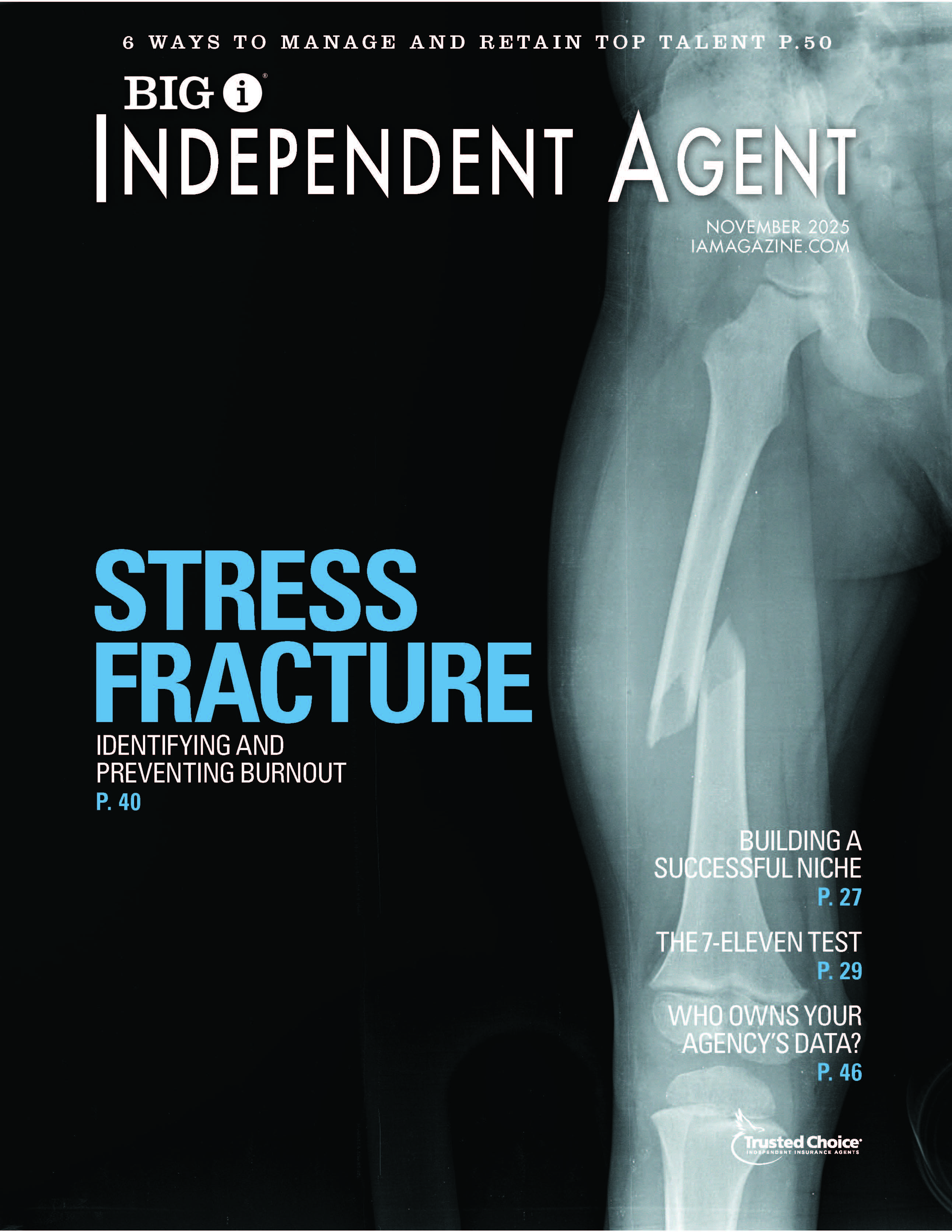Change of Plans: Health Care in an Age of Uncertainty

By: Dave Evans
The Affordable Care Act (ACA) is still the law of the land.
The first attempt at repealing and replacing the ACA didn’t make it into orbit. The second attempt passed the U.S. House of Representatives by a narrow 217-213 tally and, at press time, awaits action in the U.S. Senate. The Senate must now wrestle with the House version of the legislation, and will no doubt make changes before allowing it to move forward.
The final outcome remains uncertain. Based on the current environment and the tools you have at your disposal, what are the implications for you and your clients?
ACA Obstacles
While it’s true that the ACA expanded health insurance coverage options to millions of Americans, the program has not achieved enrollment targets, particularly with younger and healthier employees. As a result, a number of carriers that participate in the exchanges have absorbed significant losses.
In the near term, compliance issues remain, as well as a diminishing number of choices in many parts of the country when it comes to the individual marketplace through the exchanges.
Employers and plan administrators should continue to comply with the ACA’s mandates, including the employer shared responsibility mandate and ACA reporting. Importantly, instead of being delayed until 2025 as would have been the case under the AHCA, the “Cadillac” tax is scheduled to take effect beginning in 2020. Although it’s more than two years away, employers should begin planning now to minimize the impact of the tax.
The features of the ACA that are most valued—such as an insurer’s inability to apply a pre-existing condition limitation, or the cap on the multiple they can charge older Americans—comprise the chief problem with trying to repair, repeal and replace the ACA.
The universal truth of all insurance is that it involves a broad spread of risk. Adverse selection occurs when risk factors such as health, age and lifestyle cannot be adequately priced, as less healthy people secure coverage with the help of tax credits and healthier people defer enrolling until they perceive either a necessity or a large incentive to become insured, such as a tax penalty. Putting aside concerns about Medicaid expansion, the employer mandate, reporting and more, this vexing goal is difficult to achieve without getting everyone into the pool.
ACA Repeal: What Now?
The House bill includes the following key measures:
- Increasing the amount of premium subsidies for younger adults and reducing the amount for older adults, while allowing people to use subsidies to buy individual plans outside the ACA exchanges.
- Allowing older adults to be charged premiums that are five times higher than that of younger adults, instead of the 3:1 ratio the ACA established.
- Imposing a premium penalty for people who do not maintain continuous health coverage.
- Converting Medicaid funding for states to a block-grant system.
- Giving states the power to request waivers for insurers that allow them to charge people with pre-existing health conditions higher premiums if they let coverage lapse.
- Establishing funding for states to use for “high-risk” individuals, or other purposes.
The second and fifth measures above are the most contentious aspects of the bill. What the final version will look like after the Senate is done is still an open question, but the impact of the House version on costs for older voters will likely weigh into the calculus.
Depending on the final version of the Senate bill, President Trump could potentially use executive orders to enact available regulatory measures to offset a number of the ACA’s requirements. Potential efforts could also include legislation for specific health insurance elements that would provide employers with avenues to help mitigate rising costs.
One such avenue is expanding health savings accounts (HSAs); Congress has already introduced legislation to aid adoption. Other proposed legislation includes delaying implementation of the “Cadillac” tax past 2020, or repealing it altogether. The fate of both bills is not certain at press time.
A Hidden Opportunity
Many agents missed another legislative initiative that occurred in the waning days of the Obama Administration. The 21st Century Cures Act will allow employers with fewer than 50 full-time employees to offer a standalone health reimbursement account (HRA)—without conflicting with the ACA’s requirement that an HRA must integrate with another ACA health plan, along with the resulting excise tax.
That means the new law permits a small employer to sponsor an HRA even if it does not offer a group health insurance plan to its employees. For many small employers that don’t offer health insurance coverage, employees may currently have coverage under a spouse or parent’s plan, or through an exchange.
The law provides some tax planning opportunities for smaller independent agencies and their small business clients, which can consider funding an HRA to pay for their own health insurance expenses along with those of their employees [see sidebar]. This can include the employee’s individual health insurance policy premiums.
The transition rule for 2017 allows employers to provide notice within 90 days after the new law’s enactment date. An employee may be taxed on reimbursements from the qualified HRA if they do not have minimum essential coverage. If an employee enrolls in a qualified health plan in the marketplace, their premium tax credit will be reduced by the benefit available under the qualified HRA. The employer is required to report the benefit available under the qualified HRA on each employee’s Form W-2 beginning in 2017. Note: A qualified HRA will not be treated as a group health plan for the purposes of COBRA continuation coverage.
The outcome: Many small businesses that don’t offer health insurance coverage to their employees may be willing to fund the HRA up to the $4,950 individual/$10,000 family limits. Employees who have coverage through a spouse, military service or former employer could use the funds to pay for unreimbursed medical care such as deductibles and copayments, or pay their share of premiums for the coverage that isn’t available through their employer.
More Paths Forward
Meanwhile, HSAs continue to flourish. The Kaiser Family Foundation estimates that by 2018, the number of HSAs will increase to 27 million from the current 18 million—and HSA assets will reach $50 billion from the current $34.7 billion.
Current proposals position HSAs as a hybrid of medical and retirement savings, since health care expenses are a major component of retiree living expenses. This gives employees the opportunity to prefund their retiree medical insurance costs. If employees don’t use all the funds on health care while they are actively working, they can use the funds when they retire to pay for medical expenses. If employees don’t need the funds for medical expenses, they can withdraw the money after age 65 and it will be taxed as ordinary income.
At virtually every client renewal, brokers provide their clients with a high-deductible health care option in combination with an HSA, either in comparison to the current health insurance plan or as an alternative option.
To some degree, many employers are also considering adopting some form of employee wellness programs, which can help reduce health care costs and absenteeism while boosting morale and improving productivity. Research indicates that wellness programs provide a positive return on investment, making them a benefit that costs more to avoid than to provide.
Companies that self-fund their benefits have made a point to educate employees that if the employees take a proactive approach to managing their health, they can help mitigate the burdensome cost of the employer’s health insurance costs. Many agents and brokers actively serve as educators in this area, making onsite presentations to employees and via webinar in order to help point out cost-effective ways to utilize provider networks and outpatient services.
The insurance industry has entered an era of uncertainty when it comes to the fate of the ACA and future attempts to modify or replace it. More than ever, employers will be relying on their agents and brokers to keep them aware of the changing landscape and help them comply with not only the rules as they are currently written, but also the new wrinkles that are sure to come.
Dave Evans is a certified financial planner and a former IA contributor.










